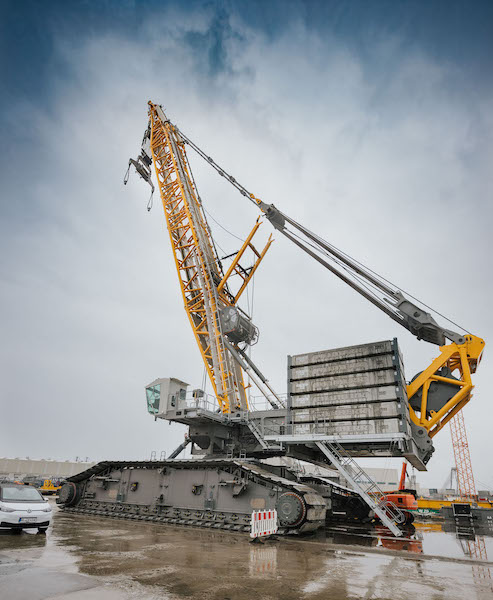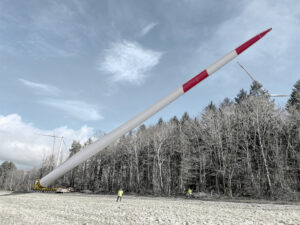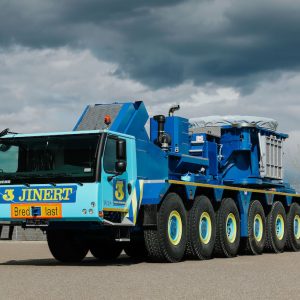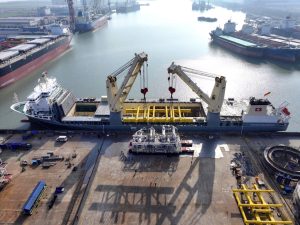The demand from the market for large crawler cranes is growing, for example in the petrochemicals industry and port handling involving enormous components for offshore applications. Driven by the energy revolution, part weights are increasing all the time, particularly when handling components for offshore wind turbines. Liebherr has decided to meet this challenge and has launched its new crawler crane, the LR 12500-1.0.
The new crane will be added to the portfolio of lattice boom cranes between the 1,350 tonne LR 11350 and the LR 13000 which has a lifting capacity of 3,000 tonnes. With its enormous lifting capacities and unique transport concept, it has been designed as an economical crawler crane for global projects.
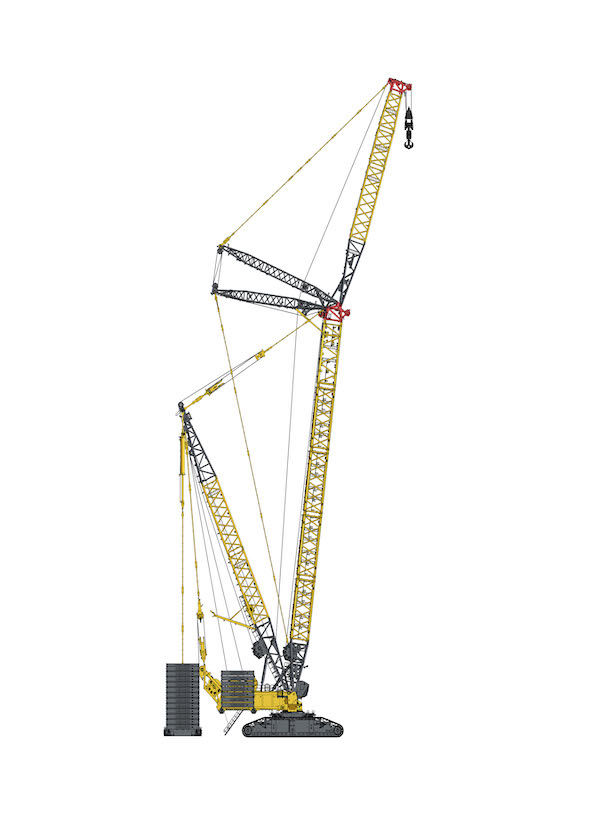
The key to high lifting capacities are wide lattice booms. The solutions to date have been a double boom like the PowerBoom or the widespread SX systems. However, the Liebherr designers chose a completely different path in the design process for the LR 12500-1.0 – the wide, powerful HighPerfomanceBoom is introduced into the turntable in an optimized way. This is made possible by a special superstructure front section, which is transported on a low-bed trailer at a width of 4 meters.
The slewing platform is supplemented by a 3.5 metre wide rear section which is also home to the two power units. Two Liebherr 6-cylinder in-line engines deliver a total of 800 kW/1088 bhp. They have a redundant design to increase the crane’s availability. There is no separate power pack. The two main hoist winches are also on this rear section.
Economical transport
The intermediate sections of the HighPerfomanceBoom each measure 10 metres in length and are reduced to an economical transport size by a refined mechanism. A separate device stabilises the lattice section during the erection process on site.
The chain is removed and transported in containers for transporting the crawler carriers, each of which weigh around 150 tonnes. The remaining chain girder is divided and moved on two low loaders. The 25 tonne ballast slabs are identical to those used on the LR 13000. They have the same dimensions of a 20 foot container to ensure they can be transported particularly economically and can be loaded using a spreader. The LR 12500-1.0 is designed for a transport width of 3.5 metres. Only two components of the new 2,500 tonne crane have a transport width of 4 metres.
Modular boom system
The maximum hook height of around 200 metres is achieved by the new LR 12500-1.0 using a 100 metre main boom and a 108 metre luffing jib. Installed with a short length, the luffing jib also acts as a particularly powerful WV jib. The “vessel lifter” is ideal for the erection of long columns in petrochemical plants.
The maximum 110 metre HighPerformanceBoom can be extended to a 155 metre boom using parts of the luffing jib. The ballast pallet on the derrick boom of the LR 13000 acts as suspended ballast. If the crane has to operate without suspended ballast in constricted conditions, it can also operate without derrick ballast in what is known as a B0 version. This principle has also been adopted from the LR 13000. The suspended ballast is infinitely adjusted with the derrick boom. The ballast radius can be extended to the maximum radius with a rigid guide.
First for Sarens
Sarens has ordered the very first model of the new Liebherr LR 12500-1.0 crawler crane. The Belgian global contractor will primarily be using the new crane in the renewables industry, for example for handling offshore wind turbines.
Managing Director Carl Sarens says: “The high lifting capacity of the LR 12500-1.0 is the outstanding feature for us. The new crane will enable us to close the gap between our crawler and ringer cranes. We are particularly focussing on jobs in renewables for the new 2500 tonne crane. Handling offshore wind turbines at ports is also becoming a much more important business segment and the weights of components continues to rise.”

